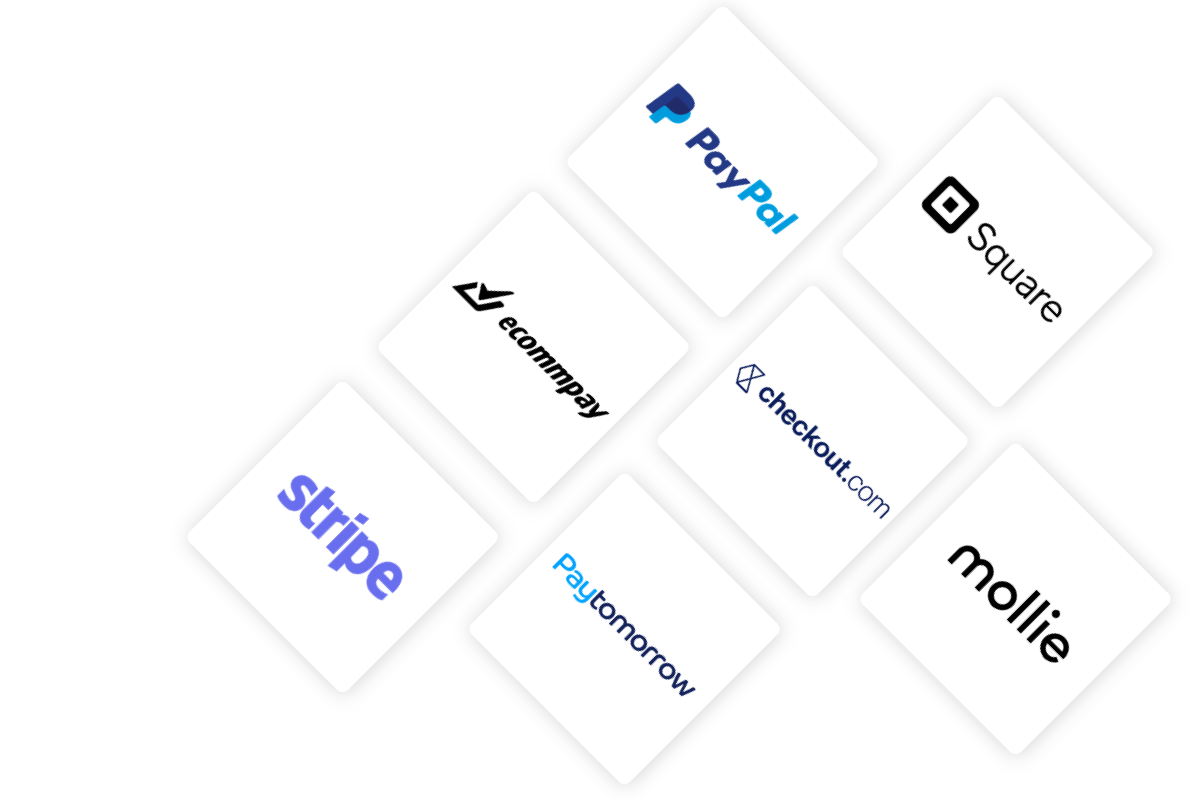Our Payment Links are different
Use your Payment Gateway
Use Multiple Payment Gateways/Methods
Not tied to any product, invoice or amount

Pre-authorize, capture payment or save a card
Streamline Your Booking Process with Payment Links: A Guide for Travel Agents
Introduction: The Importance of Streamlining Your Booking Process
In the travel industry, time is of the essence. Travel agents are constantly juggling multiple bookings, managing client requests, and ensuring that everything runs smoothly. However, the traditional booking process can be time-consuming and prone to errors. This is where streamlining the booking process with payment links can make a significant difference.
Traditionally, travel agents would have to manually collect payment information from clients, process the payment through a separate payment gateway, and then confirm the booking. This process not only takes up valuable time but also increases the risk of errors and fraud. By streamlining the booking process with payment links, travel agents can save time, increase efficiency, and provide a better experience for their clients.
What are Payment Links and How Do They Work?
Payment links are a simple and convenient way for travel agents to collect payments from their clients. A payment link is essentially a URL that can be sent to clients via email or messaging platforms. When the client clicks on the link, they are directed to a secure payment page where they can enter their payment details and complete the transaction.
Payment links work by integrating with a payment gateway or payment processor. When the client makes a payment through the link, the payment is securely processed and the funds are transferred to the travel agent’s account. This eliminates the need for manual payment collection and reduces the risk of errors or fraud.
There are several payment link providers available in the market, each offering their own set of features and benefits. Some popular payment link providers include PayPal, Stripe, and Square. These providers offer easy-to-use platforms that allow travel agents to create and customize payment links, track payments, and manage their finances.
Benefits of Using Payment Links for Travel Agents
Using payment links can bring numerous benefits to travel agents. Here are some of the key advantages:
1. Faster and more efficient booking process: By streamlining the payment process, travel agents can save time and complete bookings more quickly. With payment links, clients can make payments instantly, eliminating the need for manual payment collection and processing. This allows travel agents to focus on other aspects of their business and provide a faster and more efficient service to their clients.
2. Increased convenience for clients: Payment links offer a convenient and hassle-free way for clients to make payments. Clients can simply click on the link, enter their payment details, and complete the transaction. This eliminates the need for clients to provide their payment information over the phone or through email, reducing the risk of errors or miscommunication. Additionally, payment links can be accessed from any device with an internet connection, making it easy for clients to make payments on the go.
3. Reduced risk of errors and fraud: Manual payment collection can be prone to errors and fraud. By using payment links, travel agents can reduce the risk of errors in payment processing and ensure that all payments are securely processed. Payment links are encrypted and secure, protecting both the travel agent and the client’s sensitive payment information.
4. Improved cash flow management: Payment links allow travel agents to receive payments instantly, improving cash flow management. With traditional payment methods, travel agents may have to wait for checks to clear or for manual payments to be processed. This can cause delays in receiving funds and managing finances. With payment links, travel agents can have better control over their cash flow and have access to funds immediately.
How to Create Payment Links for Your Clients
Creating payment links for your clients is a straightforward process. Here is a step-by-step guide to creating payment links:
1. Choose a payment link provider: Select a payment link provider that suits your needs and sign up for an account. Popular providers include PayPal, Stripe, and Square.
2. Set up your account: Follow the instructions provided by the payment link provider to set up your account. This may involve providing some basic information about your business and linking your bank account for payment processing.
3. Create a payment link: Once your account is set up, you can start creating payment links. Most payment link providers offer a user-friendly interface where you can customize the payment link with your branding and specify the amount to be paid.
4. Share the payment link with your clients: Once the payment link is created, you can share it with your clients via email or messaging platforms. Include clear instructions on how to use the payment link and any additional information that may be required.
Tips for customizing payment links for your brand:
– Use your logo and brand colors to customize the payment page and make it consistent with your brand identity.
– Add a personalized message or thank you note to the payment page to enhance the client experience.
– Include any additional information or instructions that may be relevant to the payment, such as cancellation policies or refund procedures.
Integrating Payment Links into Your Booking Process
Integrating payment links into your existing booking process is a seamless process. Here are some best practices for incorporating payment links into your workflow:
1. Determine the appropriate stage to send the payment link: Consider at what point in the booking process it makes sense to send the payment link to your clients. This could be after confirming the availability of the desired travel arrangements or after providing a quote.
2. Communicate clearly with your clients: When sending the payment link, clearly communicate the purpose of the link and any additional information that may be required. Provide clear instructions on how to use the payment link and what to expect after making the payment.
3. Follow up with clients: After sending the payment link, follow up with your clients to ensure that they have received and understood the link. Address any questions or concerns they may have and provide any necessary support.
Best practices for communicating payment links to clients:
– Use clear and concise language in your communication to avoid confusion.
– Provide multiple channels for communication, such as email, phone, or messaging platforms, to accommodate different client preferences.
– Include a deadline for payment to encourage prompt action from your clients.
Ensuring Security and Privacy for Your Clients
When using payment links, it is crucial to prioritize the security and privacy of your clients’ information. Here are some tips for ensuring secure payment processing:
1. Choose a reputable payment link provider: Select a payment link provider that has a strong reputation for security and privacy. Look for providers that offer encryption and other security measures to protect sensitive payment information.
2. Use secure communication channels: When sending payment links to your clients, use secure communication channels such as encrypted email or messaging platforms. Avoid sending payment links through unsecured channels such as regular email or social media.
3. Educate your clients on security best practices: Provide your clients with information on how to protect their personal and payment information when making online payments. Encourage them to use secure networks and to avoid sharing sensitive information over unsecured channels.
Best Practices for Using Payment Links
To maximize the benefits of payment links, it is important to follow best practices. Here are some tips to keep in mind:
1. Keep payment links up to date: Regularly review and update your payment links to ensure that they are accurate and reflect any changes in pricing or terms.
2. Test the payment process: Before sending payment links to clients, test the payment process yourself to ensure that it is working correctly. This will help you identify any issues or errors that may arise.
3. Provide clear instructions: When sending payment links, provide clear instructions on how to use the link and what to expect after making the payment. This will help minimize confusion and ensure a smooth payment process.
Common Mistakes to Avoid When Using Payment Links
While payment links can greatly simplify the booking process, there are some common mistakes that travel agents should avoid. Here are a few examples:
1. Sending payment links without proper context: It is important to provide clear context when sending payment links to clients. Make sure to explain why the payment is required and what it covers. This will help avoid confusion and ensure that clients understand the purpose of the payment.
2. Not customizing payment links for your brand: Customizing payment links with your branding can help enhance the client experience and build trust. Avoid using generic payment links that do not reflect your brand identity.
3. Failing to follow up with clients: After sending a payment link, it is important to follow up with your clients to ensure that they have received and understood the link. Failing to follow up can lead to delays in payment and potential misunderstandings.
Tracking and Managing Payments with Payment Links
Tracking and managing payments made through payment links is essential for staying organized and efficient. Here are some tips for effectively managing payments:
1. Use a dedicated system or software: Consider using a dedicated system or software to track and manage payments made through payment links. This can help you stay organized and easily access payment information when needed.
2. Keep detailed records: Maintain detailed records of all payments made through payment links, including the date, amount, and client information. This will help you reconcile payments and provide accurate financial reports.
3. Regularly reconcile payments: Regularly reconcile payments made through payment links with your bank statements to ensure that all payments have been received and processed correctly.
Conclusion: Simplify Your Booking Process with Payment Links
Streamlining the booking process is crucial for travel agents to save time, increase efficiency, and provide a better experience for their clients. Payment links offer a simple and convenient way for travel agents to collect payments, reducing the risk of errors and fraud.
By using payment links, travel agents can benefit from a faster and more efficient booking process, increased convenience for clients, reduced risk of errors and fraud, and improved cash flow management. By following best practices and avoiding common mistakes, travel agents can maximize the benefits of payment links and simplify their booking process.
In conclusion, payment links are a valuable tool for travel agents looking to streamline their booking process and provide a better experience for their clients. By embracing this technology, travel agents can save time, increase efficiency, and improve their cash flow management. So why wait? Start using payment links today and simplify your booking process.



